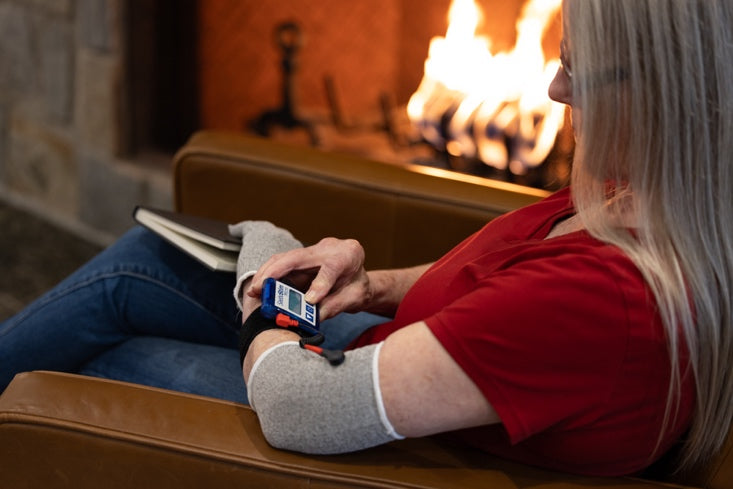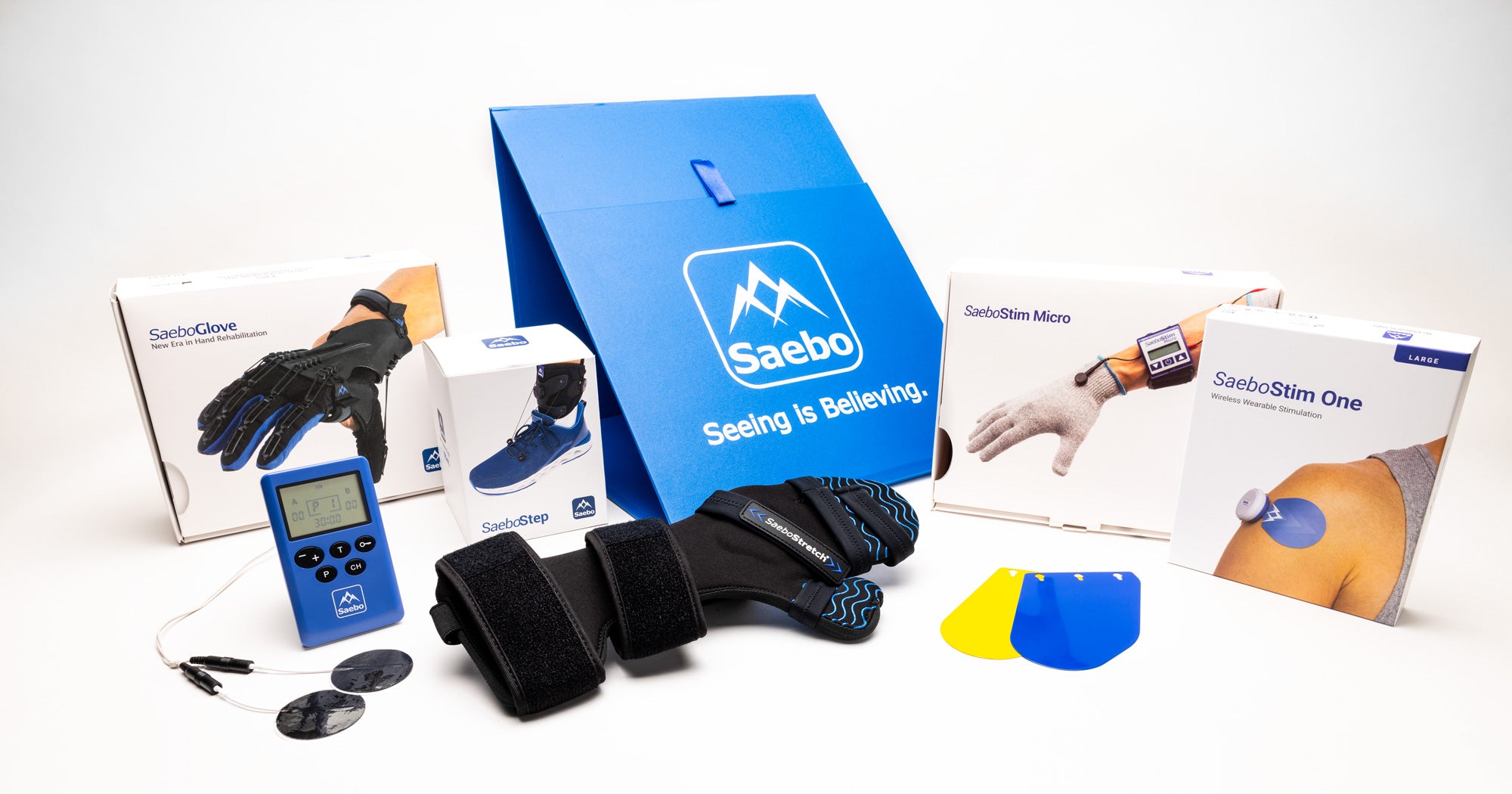Hemiplegia vs Hemiparesis: The Essential Guide You Need to Know

This comprehensive guide explores the nuances of hemiplegia and hemiparesis, their underlying causes, characteristic symptoms, and cutting-edge treatment approaches, including advanced neurological rehabilitation tools and techniques.
Understanding the distinction between hemiplegia and hemiparesis is crucial for healthcare professionals and caregivers providing neurological rehabilitation. While both conditions affect the body unilaterally, their severity and impact on mobility differ significantly. Hemiplegia manifests as complete or near-complete paralysis of one side, whereas hemiparesis presents as weakness without total loss of movement. These conditions stem from compromised communication pathways between the brain and muscles, with the severity of brain tissue damage determining the extent of impairment. Extensive damage typically results in hemiplegia, while milder damage often leads to hemiparesis. Stroke remains the primary cause of both conditions, though early intervention with appropriate rehabilitation devices, such as Saebo's innovative solutions, can significantly impact recovery outcomes.
WHAT IS HEMIPLEGIA AND HEMIPARESIS?
The terminology itself provides insight into these conditions - "hemi" meaning half, combined with either "paresis" (weakness) or "plegia" (paralysis). Both conditions originate from disruptions in the central nervous system's motor pathways, specifically the communication channel from the primary motor cortex through the corticospinal tract to the muscles. Early mobilization proves crucial for optimal recovery following neurological injury, with rehabilitation devices like SaeboFlex and SaeboGlove playing vital roles in preventing complications such as muscle atrophy and joint contractures. These innovative solutions, combined with traditional therapy approaches, help combat learned nonuse by facilitating active engagement of affected limbs during the critical early stages of rehabilitation.
For patients with compromised shoulder or elbow strength, advanced rehabilitation tools like the SaeboMAS prove invaluable. The SaeboMAS enables controlled, active-assisted movements that would typically be challenging or unattainable during initial rehabilitation phases.
Hemiparesis definition and overview
Hemiparesis refers to partial muscle weakness affecting one side of the body. The weakness manifests through difficulties in performing routine activities such as opening or closing the hand, maintaining balance, ambulating, or elevating the affected extremities. Patients may also experience coordination deficits, equilibrium challenges, or altered sensations on the affected side. Notably, individuals with hemiparesis maintain partial movement capability in affected limbs, though with considerable difficulty. The condition affects either the left or right side, correlating with the location of brain injury. To address these impairments, specialized assistive devices enhance performance and facilitate more effective therapeutic exercises. In addition to intentional therapeutic intervention (more about that later!) assistive devices such as the SaeboGlove can enhance hand function and grasp patterns during activities of daily living, while the SaeboStep provides dynamic support for foot drop, enabling safer and more efficient gait patterns. When integrated into comprehensive rehabilitation protocols, these innovative tools optimize functional recovery and promote independence.
Hemiplegia explained simply
In contrast to hemiparesis, hemiplegia involves complete paralysis of one side of the body. This paralysis may manifest as flaccidity, or alternatively, as spastic hemiplegia, characterized by involuntary muscle contractions [1]. Like hemiparesis, hemiplegia can affect either side of the body, with the spinal column acting as the natural demarcation . Given the initial flaccidity often present in hemiplegia, preventing joint deterioration and contractures becomes paramount in early intervention. Neuromuscular electrical stimulation devices, such as the SaeboStim One and SaeboStim Pro, effectively activate muscles and maintain strength and stability. Additionally, proper positioning techniques play a crucial role in recovery. Dynamic resting hand orthoses help preserve joint mobility in the wrist and digits, with the SaeboStretch offering customizable support through its innovative design.
Key difference between hemiplegia and hemiparesis
The primary distinction centers on severity—hemiparesis presents as weakness, while hemiplegia manifests as complete paralysis. These conditions share an underlying pathophysiology - disrupted signal transmission between the central nervous system, brain, and muscular system [2].
In hemiparesis, some neural pathways remain functional, enabling limited movement, while hemiplegia involves complete disruption of these neural pathways. Importantly, both conditions affect signal transmission rather than causing direct muscle damage - the muscles remain structurally intact but fail to receive proper movement commands from the brain due to neurological impairment. Since the muscles remain intact, it is essential that strategies are put in place to maintain their integrity.
WHAT CAUSES THESE CONDITIONS?
Stroke remains the predominant cause of either of these conditions, affecting more than 12 million individuals worldwide annually [3]. It specifically damages the corticospinal tract, the crucial pathway for voluntary movement control, disrupting neural signaling [2]. Beyond damage to motor pathways, depending on the location of damage to the brain and its corresponding pathways, individuals can frequently experience varying levels of sensory loss or dystonia (involuntary muscle contractions). Additional significant causes include traumatic brain injuries (such as concussions and hemorrhages) and spinal cord injuries, which can compromise both motor control and sensory function.
HOW SYMPTOMS APPEAR AND PROGRESS
Understanding the progression of symptoms in hemiplegia and hemiparesis is crucial for implementing effective rehabilitation strategies and assistive devices as symptoms typically emerge immediately post-brain injury and evolve over time.
Partial muscle weakness after stroke
Within the first four hours following stroke, affected muscle tissue experiences a reduction in motor units [4]. Motor deficits manifest in 80% or more of patients, predominantly affecting the side opposite to the brain lesion [5]. Muscle atrophy can begin as early as around the first week after a neurological injury or post-stroke [6]. Inactive muscles progressively lose both mass and strength, potentially hindering recovery outcomes highlighting the need for early after stroke rehabilitation such as the use of electrical stimulation devices such as the SaeboStim Pro or SaeboStim One.
Spastic vs Flaccid Hemiplegia
Initial symptoms often present as flaccidity—characterized by complete loss of voluntary movement and decreased muscle tone. During this early recovery stage, limbs appear limp and unresponsive which in turn may result in 25% or more of survivors developing spasticity, marked by rigid, contracting muscles resistant to movement [7].
Sensory and motor impairments
Beyond muscle weakness, 50-80% of stroke survivors experience somatosensory deficits [8]. Research indicates significant relationships between sensory capabilities and motor performance, particularly evident during activities performed without visual feedback. Postural instability commonly stems from alterations in motor control, sensory processing, and neural integration. Early focus on sensory recovery can support long term improvements in overall function. One great tool for individuals with hypersensitive or hyposensitivity post stroke is the SaeboStim Micro. Operating at a sub-sensory level, the SaeboStim Micro works on normalizing sensory pathways at a level that is not noticeable to the individual wearing it.
Need for timely rehabilitation
Initiating rehabilitation promptly after stroke or brain injury is vital for maximizing recovery potential through neuroplasticity—the brain's remarkable ability to reorganize and form new neural connections. Research confirms that beginning rehabilitation within 48 hours of hospital admission can reduce length of stay and improves completion of daily activities [9]. This early intervention window is crucial as it coincides with heightened neuroplastic changes in the brain, allowing for optimal rewiring of neural pathways. Additionally, early spasticity management combined with physical therapy and occupational therapy can demonstrate substantial cost savings compared to conventional treatment approaches. Timely rehabilitation interventions specifically enhance physical capabilities while minimizing potential long-term complications and capitalizing on the brain's natural healing mechanisms.
Saebo's role and devices that support
Saebo provides innovative rehabilitation solutions designed for neurological recovery that are both effective at improving clinical treatment options as well as at home rehabilitation. For example, the SaeboMAS and SaeboMAS Mini are dynamic mobile arm support systems that offer gravity-eliminated assistance for individuals experiencing shoulder weakness post-stroke. For hand rehabilitation, the SaeboFlex enables patients with neurological conditions to incorporate their affected hand functionally during therapy sessions. The SaeboGlove similarly facilitates hand opening and closing movements, allowing patients to practice functional activities independently at home. Saebo’s clinical solutions are intentionally designed with the patient and their caregivers in mind, by providing cost-effective and intuitive designs to support individuals' long-term recovery.
TREATMENT AND RECOVERY OPTIONS
Contemporary rehabilitation strategies provide promising outcomes for individuals affected by hemiplegia and hemiparesis, utilizing advanced techniques to restore neural pathways and functional abilities. Modern approaches leverage neuroplasticity principles through intensive, repetitive practice combined with task-specific training to optimize recovery outcomes.
Active vs Passive Exercises
Passive exercises, conducted without active muscle engagement, are essential for maintaining joint mobility and preventing stiffness in the presence of hemiplegia and hemiparesis. These exercises, performed by healthcare providers or caregivers, involve guided movement of affected limbs to preserve muscle length and enhance circulation. Active rehab exercises, conversely, require patient participation, strengthening neural pathways through consistent repetition. Research demonstrates that implementing both modalities accelerates motor recovery [10; 11].
Task-specific training and repetitive task practice have emerged as crucial rehabilitation strategies. These approaches involve practicing specific functional movements that directly relate to daily activities, such as reaching, grasping, or walking. By repeatedly practicing these targeted movements, patients can strengthen neural pathways specific to these tasks, leading to improved functional outcomes and greater independence in daily activities.
NMES therapy and electrical stimulation
Neuromuscular Electrical Stimulation (NMES), one form of electrical stimulation or “e-stim,” delivers precise electrical impulses to activate compromised muscles. This therapeutic approach has shown to enhance hand function during daily activities [12]. For home programs, the SaeboStim One is a very cost-effective and simple to use electrical stimulation device. With only three buttons and no wires to deal with, it is a great tool to train patients and caregivers for home program usage to help fight against shoulder subluxation as well as to initiate hand movement. The SaeboStim Pro, Saebo’s pocket-sized all-in-one stimulation device, is equipped with a “trigger” button that further allows the patient to initiate a desired movement before providing support further strengthening the neural pathways.
Mirror therapy and SaeboGlove for hand weakness
Mirror therapy employs visual feedback to facilitate neuroplasticity, with clinical studies showing that the technique strengthens connections between the brain’s visual and motor regions, [13]. The SaeboGlove, an innovative dynamic orthosis, combined with electrical stimulation, enables impaired hands to engage in task-specific training.
Is hemiparesis permanent?
The recovery trajectory for hemiparesis varies significantly depending on the extent of brain damage. While some individuals may experience improvements within weeks, others might require months or years of dedicated rehabilitation. However, consistent engagement in therapeutic exercises and interventions, particularly using specialized equipment like Saebo devices, can significantly accelerate the recovery process.
CONCLUSION
Understanding the fundamental differences between hemiplegia and hemiparesis is crucial for implementing effective management strategies. This comprehensive guide has explored their distinct characteristics—hemiparesis presenting as weakness and hemiplegia as complete paralysis affecting the body unilaterally. Both conditions result from disrupted neural signaling, predominantly following stroke events. While these conditions present significant challenges, contemporary rehabilitation approaches, including Saebo's innovative solutions, offer promising recovery pathways. Early intervention, particularly within 72 hours post-brain injury, significantly enhances patient outcomes. Modern rehabilitation options encompass passive and active exercises, neuromuscular electrical stimulation, mirror therapy, and advanced equipment like the SaeboGlove or SaeboMAS. Recovery timelines vary based on injury severity, ranging from weeks to years, but consistent rehabilitation efforts invariably expedite progress regardless of initial condition severity.
The path to recovery from hemiplegia or hemiparesis presents unique challenges. The brain's remarkable capacity for neuroplasticity—its ability to forge new neural pathways—offers hope for significant recovery even after severe neurological trauma. Each patient's rehabilitation journey is distinctly personal, influenced by factors such as injury severity and timing of intervention. While the rehabilitation process may initially seem overwhelming, positive outcomes are achievable through the combined efforts of experienced healthcare professionals, dedicated caregivers, and patient perseverance, particularly when utilizing evidence-based treatment approaches and innovative rehabilitation equipment.
REFERENCES
- https://my.clevelandclinic.org/health/symptoms/23542-hemiplegia?utm
- https://www.frontiersin.org/journals/human-neuroscience/articles/10.3389/fnhum.2024.1408818/full?utm
- https://pmc.ncbi.nlm.nih.gov/articles/PMC11786524/?utm
- https://journals.lww.com/nrronline/fulltext/2024/04000/pathophysiological_changes_of_muscle_after.16.aspx?utm
- https://pmc.ncbi.nlm.nih.gov/articles/PMC7944424/?utm
- https://pubmed.ncbi.nlm.nih.gov/37695037/
- https://pmc.ncbi.nlm.nih.gov/articles/PMC2892615/?utm
- https://pubmed.ncbi.nlm.nih.gov/30943883/
- https://pmc.ncbi.nlm.nih.gov/articles/PMC11534803/?
- https://pmc.ncbi.nlm.nih.gov/articles/PMC6428159/?
- https://journals.plos.org/plosone/article?id=10.1371%2Fjournal.pone.0087987&utm
- https://pmc.ncbi.nlm.nih.gov/articles/PMC6513639/?utm
- https://www.frontiersin.org/journals/human-neuroscience/articles/10.3389/fnhum.2017.00054/full
All content provided on this blog is for informational purposes only and is not intended to be a substitute for professional medical advice, diagnosis, or treatment. Always seek the advice of your physician or other qualified health providers with any questions you may have regarding a medical condition. If you think you may have a medical emergency, call your doctor or 911 immediately. Reliance on any information provided by the Saebo website is solely at your own risk.



